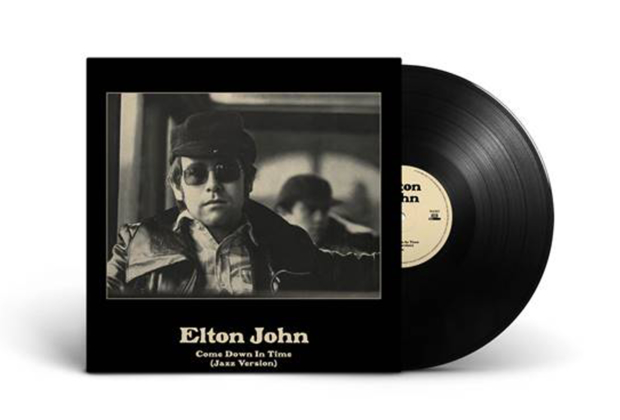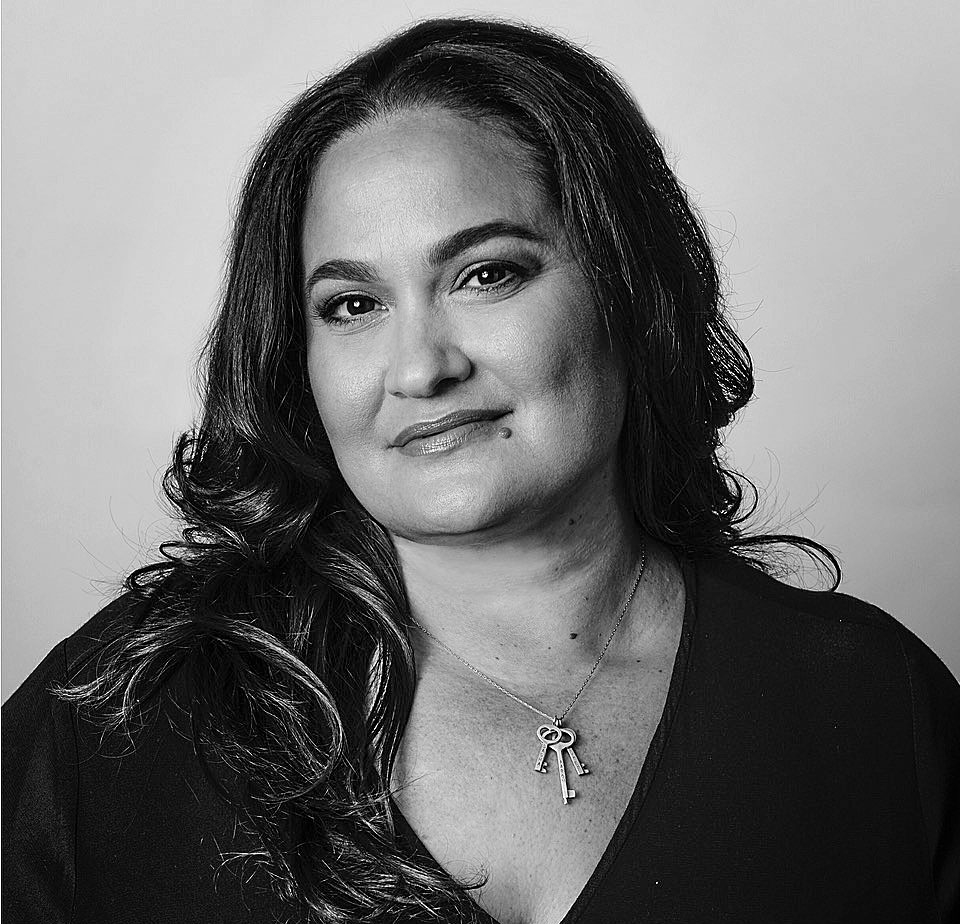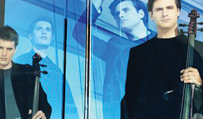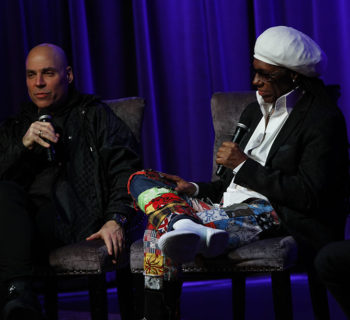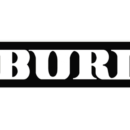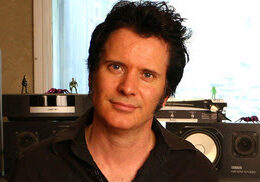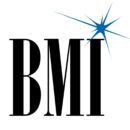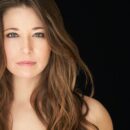Tumbleweed Connection is the third studio album by singer-songwriter Elton John. It was recorded in London at Trident Studios in March 1970, released in October 1970 in the United Kingdom and subsequently issued during January 1971 in the United States.
In celebration of the 50th anniversary of his seminal album Tumbleweed Connection, Elton John has today unveiled a previously unheard jazz version of "Come Down In Time." Limited to just 5,000 copies of 10” vinyl.
"Come Down In Time (Jazz Version)" hadn’t been heard for close to 5 decades until this year, it was uncovered deep in the archives whilst researching rarities for Elton’s forthcoming boxset Elton John: Jewel Box (released 13th November on UMe).
Recorded on March 20, 1970 at London’s Trident Studios, "Come Down In Time (Jazz Version)" more than doubles the length of the final version (re-recorded 3 months later with different musicians) that appears on Tumbleweed Connection.
Without the orchestral arrangements by Paul Buckmaster that colored the album version, the track ends in the same way as the original with Bernie’s line “while some leave you counting stars in the night” before starting up again as a jazz-influenced instrumental.
The track features some astonishing piano and guitar interplay between Elton and Caleb Quaye, supported by the Hookfoot rhythm section of David Glover on bass and Roger Pope on drums. ‘Very nice!’ producer Gus Dudgeon exclaims as the track breaks down, before resuming with yet more freestyle playing.
"Come Down In Time" was originally taken from Elton’s seminal 1970 album Tumbleweed Connection which celebrated the 50th anniversary of its original release on Friday, October 30, 2020.
Tumbleweed Connection is a much-loved album within Elton John’s back catalogue. Steeped in what was to become known as ‘Americana,’ it was written and recorded entirely in London from March 20 to June 6, 1970, fitted in amongst Elton’s various promotional dates in UK and Europe for his previous, eponymous, album.
Although released afterwards, it was made before ‘Your Song’ had become a hit and Elton’s triumphant debut performances at the Troubadour in West Hollywood in late August - the first time Elton and Bernie stepped foot on the soil they had written so eloquently about on the LP. Its iconic sepia sleeve evokes a long-forgotten West, and the album itself contains some of Elton and Bernie Taupin’s greatest early songs: ‘Ballad Of A Well-Known Gun,’ ‘Burn Down The Mission’ and ‘Amoreena.’
In my 2014 book, Turn Up The Radio! Pop, Rock and Roll in Los Angeles 1956-1972, I quoted arranger, conductor and composer Paul Buckmaster on collaborating with Elton John from a lecture he gave in 2014 at the UCLA Herb Alpert School of Music SONGWRITERS ON SONGWRITING: Killer Hooks, Essential Songs & Songwriters of the Rock Era class taught by Professor David Leaf.
“It wasn’t an audition for her so much as for me. Tony Visconti hired me to work on [David Bowie’s] 'Space Oddity.' I was obsessed with Kubrick’s 2001. I saw it at least a dozen times and really tried to bring that quality from the movie’s score, which featured Richard Strauss and in particular, Gyorgi Ligeti. Unfortunately, that cheesy mellotron swamped my strings and you can’t really hear my work.
“On November 3, 1969, I went to see Miles Davis at Ronnie Scott’s. I had befriended Tony Hall who was a great friend of Miles and we were his guests. During a set break, I’m tapped on the shoulder by Steve Brown, a music industry figure who introduces me to a fellow artist who he is representing Mr. Elton John. Elton asked if I would be willing to do some arranging on his new album. I listened to some demos really loved them but don’t ask me why and suggested that Gus Dudgeon would be the perfect producer for this project. Steve and Elton agreed wholeheartedly.
“Gus and I spent three days in his office, breaking down every song. I wrote the rhythm section parts as well as the orchestrations-and we recorded and mixed the whole thing in seven days. We were given total carte blanche. Elton and Steve expected us to be thoroughly professional and we were.
“One example: On "Sixty Years On," I decided to replace Elton’s piano part with a harp, because that’s what the song told me to do. I’m always in service of the song, nothing else. "Take Me to The Pilot" features my rhythm charts; I even wrote out the drum fills which were played beautifully. I’m really a frustrated funk drummer who missed his calling."
In 2014 I interviewed Paul Buckmaster for my book on Leonard Cohen, Everybody Knows. Paul worked on Cohen’s Songs of Love and Hate.
“My background was completely classical from a tot. I received a scholarship to the Royal College of Music and graduated in 1967. My cello professor then called and I was invited to tour with the Bee Gees’ backing orchestra.
“I was an outside client of Trident Studios in London, sometimes coming in as an arranger or an arranger/producer, sometimes playing on sessions on cello or as a keyboardist, or all of it as production work.
“I had been doing a lot of pop work. I had already done ‘Space Oddity’ with David Bowie in 1969, and then a couple of albums with Elton John, his debut U.S. LP, and Tumbleweed Connection and the Friends soundtrack. The movie score. It was not just strings and horns. I was responsible for arranging the rhythm section on the Elton John album and most of Tumbleweed Connection, and most of Madman Across The Water.
“The Trident Studio in Soho was as anechoic as it could get. When you shut the heavy doors of the studio your ears compressed. It was so dead in there. Every surface was totally absorbent. Not one reflective surface. Even the Steinway piano had a ‘car cover.’ And the studio floor was as dead as a doornail. And the sound which was great was a combination of the studio and the genius engineer, Robin [Geoffrey] Cable. He was a brilliant engineer. He was the guy who made drums sound as if they were bitchen’. It was saturation tape. What was there was a proper echo chamber and a [EMT] plate. That was the only reverb that existed there.”
On November 7, 2017, when Buckmaster died at 71, Elton John on his twitter account posted, “RIP Paul Buckmaster. So heartbroken. He helped make me the artist I am. A revolutionary arranger who took my songs and made them roar.”
Earlier this decade I interviewed Keith Hayward, author of Tin Pan Alley: The Rise of Elton John. A revealing and educational study that takes us through Elton John’s 1970 commercial arrival who was born Reg Dwight, with stops at Denmark Street and its environs-London’s Tin Pan Alley.
Reg’s first job for Mills Music, teaming with lyricist Bernie Taupin for Dick James Music, followed by their songwriting collaboration for Lulu in a Eurovision Song Contest is also examined.
“My own take on this is that during this period Elton was creating unique work that started off as being very much underground. Hard to believe that now! However during these early years he gave a lot of creative control to other people such as Paul Buckmaster and Gus Dudgeon and was influenced by his friend and mentor Steve Brown. With Elton and Bernie, of course, all of these people created the 'Elton John' sound that created the breathtaking work that you mention.
“Arrangers and Producers were extremely important in the UK at the start of the 1970's, sounds were becoming more complicated and it was now longer just a song that consisted of drums, bass, guitar and vocalist ala the Beatles and the Rolling Stones. Orchestras were introduced more into the world of popular music and these need to be arranged and produced to meet the changing tastes of the popular music buying public. Alongside Denny Cordell and George Martin came a new school of producers like Gus Dudgeon who had started using arrangers like Paul Buckmaster on iconic projects like Space Oddity by David Bowie.
“Both Cordell and Martin were approached to produce the second Elton John album, (the black one), but were eventually overlooked to bring in Dudgeon and Buckmaster.
“Buckmaster was new to arranging and he was ripe to experiment in all sorts of things and was one of the first to use synthesizers, which are used on the Elton John album.
“What also helped was that Elton gave Buckmaster complete creative control and so that comes across in that early but life changing album. The relationship between Buckmaster and Dudgeon was as much an influence on the Elton John sound as that of Elton John and Bernie Taupin.
“Gus was, and still is, and significant influence on Elton's music even long after his death. I believe that Gus would have been part of Elton's creative team today if it hadn't been for his untimely death and I firmly believe Elton's career would have been all the better for it.”
I was an avid reader of Melody Maker since 1964. I first became aware of Elton John’s Empty Sky DJM record label first LP in June of 1969. I ordered it as an English import from Lewin Record Paradise on Hollywood Blvd.
His piano playing, voice and some numbers were impressive but the album only hinted at his greatness. [It was later released in 1975 on the MCA Records label in the US].
The next year in Melody Maker there was a review from deputy editor writer Richard Williams about Elton’s second long player simply titled Elton John in the April 25, 1970 issue.
The astute scribe wrote, “It’s nice to see Cat Stevens and Elton John providing the British answer to Neil Young, and Van Morrison. And make no mistake Elton is up in that class.
“This is his second album, and is considerably meatier and more substantial than the first. He and Bernie Taupin craft superb songs, strong in every department (words, music, moods), and Paul Buckmaster's sumptuous arrangements. Gus Dudgeon's brilliant production lifts the result almost beyond words. If Elton has a fault, it's that he sometimes sounds rather too much like Feliciano in the way he turns and ornaments phrases, but once you get past that it's beauty all the way.
“A truly great record.”
I really dug Jose Feliciano’s vocal delivery on his hit RCA recordings besides the dazzling arrangements and re-workings of “Light My Fire” and “California Dreamin’.”
After reading Williams’ endorsement, I immediately ordered the Elton John UK import LP from Lewin Record Paradise on Hollywood Blvd.
The disc was cut at Trident Studios which had a 16-track machine, Sound Techniques boards plus a Bechstein piano. UNI/MCA label Vice-President and visionary A&R man Russ Regan secured the item for North American territories.
I met talent scout Regan in September 1967 at the Whisky a Go Go one evening when his label act, Hugh Masekela was cutting a live album for UNI in the famed venue. I was well under age 18, looked 12, but Elmer Valentine and Mario Maglieri at the club graciously allowed me to enter their temple of sound and sit in the balcony.
I later ran into Russ in the summer of 1970 on Hollywood Blvd. at C.C. Brown’s ice cream parlor. We ordered two hot fudge sundaes in tin bowls.
Russ started talking about Elton John. I knew the name. He just beamed, and exclaimed, “You are gonna hear this guy on the AM and FM radio dial!” Regan also added, “Three Dog Night has already covered his tunes ‘Lady Samantha’ and ‘Your Song’”
I didn’t know how important or have any idea what those credits actually meant at the time.
Regan has played a major role in the careers of the biggest names in the music business, including the Beach Boys, Neil Diamond, Elton John, Barry White, Olivia Newton-John, and the Alan Parsons Project-all of whom credit Regan as a major force behind their success.
In my 2014 book, Turn Up The Radio! Rock, Pop, and Roll in Los Angeles 1956-1972, Regan talked about his discovery of Elton John and guiding his career in the US during the first part of the seventies.
“UNI Records was on 8255 Sunset Boulevard.
“Lenny Hodes was a song-plugger for Dick James Music. I knew of Dick James—he was the Beatles’ publisher—but had never met him. Lenny bought me this [Empty Sky] record and said, ‘DJM [Dick James Music] has a licensing deal with Larry Uttal of Bell Records, and they passed. I’ve shopped this everywhere, and it’s been turned down by five record companies. They think he sounds like Jose Feliciano.’”
Songwriter Roger Greenaway also praised Elton John to Regan at the Continental Hyatt Hotel at that breakfast supporting Regan’s impulsive decision to seriously consider signing Elton John to the UNI label.
“I took it, and around six o’clock that night, I put it on,” recalled Regan. “It was the Empty Sky album. ‘Oh my God,’ I thought, ‘this guy is good. What the hell is the problem?’ I loved his voice and the songs. ‘Skyline Pigeon’ and stuff like that. ‘Lady Samantha’ was in there. I called Lenny and said, ‘I like this artist. What’s the deal?’ He said, ‘If you like him, Russ, you got him for nothing.’ So I said, ‘I want him, and I want to sign him.’
“He calls me the next day and says, ‘I just talked to Dick James, and we have a deal. But Dick wants you to buy another act along with this kid. We’re giving you Elton John for nothing, and Dick wants $10,000 for a band called Argosy; I replied, “because you guys are so nice to give me Elton John for nothin’, I’ll buy this other master for $10,000.’
“Then, before I could put out Empty Sky, the advance of the Elton John album came to me in the mail. That’s when I shut the record label down for a couple of hours [and] brought [in] the employees, sales and marketing, A&R, everybody—thirty people sitting on the floor of my office. I looked up to the sky and said, ‘Thank you, God.’
“Bernie Taupin’s lyrics, if you analyze them, were incredible. He was way ahead of everybody. For a 21-year-old kid at the time he was amazingly talented.
“Paul Buckmaster the arranger. The arranger is important. Sometimes you have to play the song to a skeleton without any meat on it. The arranger comes along and puts the meat on the skeleton. It all comes together. An arranger takes a song for what it is and builds something around it and gives it life and dynamics.”
In the seventies I saw Elton John at Doug Weston’s Troubadour club in West Hollywood. I also caught his June 21, 1975 UK Wembley stadium concert with the Eagles and Beach Boys where he unveiled Captain Fantastic and the Brown Dirt Cowboy. I attended Elton’s October 25, 1975 Dodger Stadium show in Los Angeles.
While writing for Melody Maker in 1975, Elton and I chatted inside the legendary Cherokee Studios on Fairfax Avenue at the Rocket Records release party of Neil Sedaka’s The Hungry Years.
Later, as MCA Records West Coast Director of A&R during 1977-1978, I encountered Elton three times. We discussed Tamla-Motown, Billy Stewart, Jackie Wilson, the Chi-Lites, Laura Nyro and the Hollies. Elton confirmed he played piano on their 1969 recording session for “He Ain’t Heavy, He’s My Brother,” a tune Tony Hicks of the band found on Denmark Street.
On October 14, 1978, Elton gave a solo set recital for MCA record executives and staff employees in Los Angeles at the Century Plaza Hotel. It was the occasion to reveal his new A Single Man album. John chided the label, and did some selections from A Single Man not usually found in his 1978 live repertoire. The rendition of “Sixty Years On” was stunning.
During 1976-1986, I would see Elton once in a while at Gaylord Indian Restaurant at 50 North La Cienega Blvd. near Beverly Hills. Gaylord became a destination spot where British transplants desperately needed their weekly Indian meal.
In 1980, Russ Regan became PolyGram Records' General Manager of West Coast Operations. He was the music consultant on the Flashdance soundtrack that sold 14 million copies. Regan was also Music Supervisor for Breakin, A Chorus Line, This is Spinal Tap, Karate Kid, and Chariots of Fire.
In 1986 Russ was hired as President of Motown’s Creative Division. He worked on Smokey Robinson's comeback album, One Heartbeat, which went platinum and spawned two top 10 singles. Regan remained with Motown until the company was sold in 1988.
I do wish that in the recent Elton John Rocketman biopic and Elton’s autobiography, Me, Russ Regan was given some acknowledgement.
If not for Russ, we may have never heard the delightful early career Elton John albums like Tumbleweed Connection in the United States. •
When Russ Regan passed away in May 2018 at age 89, Elton John on twitter offered this condolence. “RIP Russ Regan. Thank you for believing in me and helping launch my career.” Elton John (@eltonofficial) May 29, 2018.
HARVEY KUBERNIK is the author of 19 books, including Canyon Of Dreams: The Magic And The Music Of Laurel Canyon and Turn Up The Radio! Rock, Pop and Roll In Los Angeles 1956-1972. Sterling/Barnes and Noble in 2018 published Harvey and Kenneth Kubernik’s The Story Of The Band: From Big Pink To The Last Waltz. For summer 2021 the duo has written a multi-narrative book on Jimi Hendrix for the publisher.
Otherworld Cottage Industries in July 2020 published Harvey’s 508-page book, Docs That Rock, Music That Matters, featuring Harvey’s interviews with D.A. Pennebaker, Chris Hegedus, Albert Maysles, Murray Lerner, Morgan Neville, Curtis Hanson, Michael Lindsay-Hogg, Andrew Loog Oldham, Dick Clark, Ray Manzarek, Travis Pike, Allan Arkush, and David Leaf, among others.
In 2020 Harvey served as Consultant on Laurel Canyon: A Place In Time documentary directed by Alison Ellwood which debuted in 2020 on the EPIX/MGM television channel.
Kubernik’s writings are in several book anthologies, most notably The Rolling Stone Book Of The Beats and Drinking With Bukowski.
Harvey penned a back cover endorsement for author Michael Posner’s book on Leonard Cohen that Simon & Schuster, Canada published in October 2020, Leonard Cohen, Untold Stories: The Early Years)

